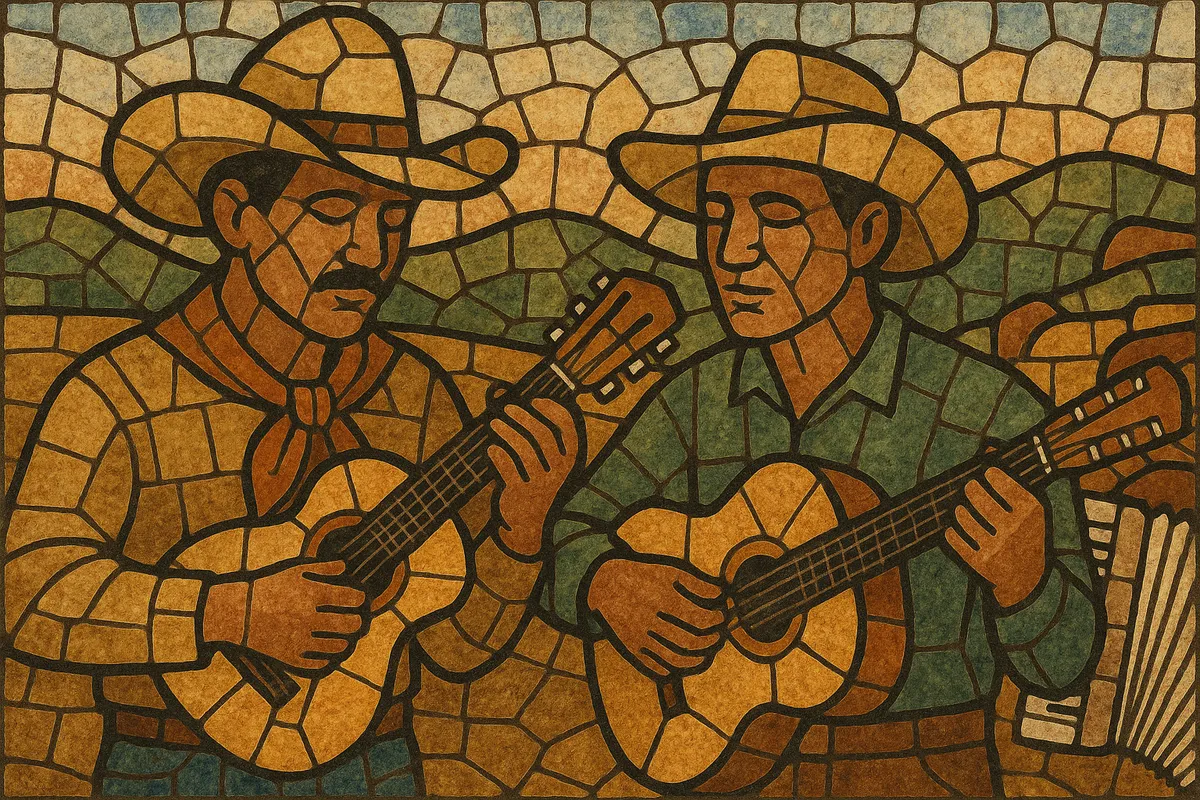Sertanejo tradicional (also called sertanejo de raiz) is the early, roots-oriented form of Brazilian country music that crystallized from rural “caipira” song traditions in the early 20th century. It is centered on duet vocals singing in close harmony and the distinctive sound of the viola caipira (10‑string Brazilian guitar), often supported by acoustic guitar and, at times, accordion.
The style features storytelling ballads (modas de viola), devotional and pastoral themes, and dance rhythms adapted from Iberian and Southern Cone sources such as waltz, polka, xote, chamamé, and guarânia. Its melodies are typically diatonic and folk-like, harmonies rely on simple functional progressions, and arrangements highlight picked patterns and bass runs (baixarias) on viola. Lyrically, the music celebrates rural life, love, faith, landscapes, and the nostalgia (saudade) of the countryside.
The roots of sertanejo tradicional lie in Brazil’s rural “caipira” culture, where sung poetry and folk dances were accompanied by the viola caipira. Before the recording era, forms like moda, cururu, cateretê, and toada circulated orally across the interior of São Paulo, Minas Gerais, Goiás, and Mato Grosso do Sul.
The genre coalesced with the arrival of commercial recording and radio. In 1929, producer Cornélio Pires recorded caipira performers, helping define a market for rural duos singing in parallel thirds and sixths. Early discs established the hallmarks: narrative lyrics, duet harmony, and viola-driven accompaniment.
The mid‑century brought prolific duos and refined instrumentation (viola, acoustic guitar, accordion, occasional upright bass). Repertoires incorporated dance forms from neighboring regions—waltz (vals), polka, xote, chamamé, and especially the Paraguayan‑derived guarânia—while retaining the storytelling core of the moda de viola. Pioneers like Tião Carreiro codified the pagode caipira playing style (percussive right‑hand patterns and flowing baixarias) within the traditional framework.
From the 1980s onward, new substyles (sertanejo romântico, later sertanejo universitário and agronejo) modernized production and pop appeal, yet continued to draw on the harmonies, themes, and duet format of the traditional era. Festivals, TV/radio programs, and dedicated viola schools have sustained the roots style, keeping its repertoire and techniques alive alongside contemporary variants.


